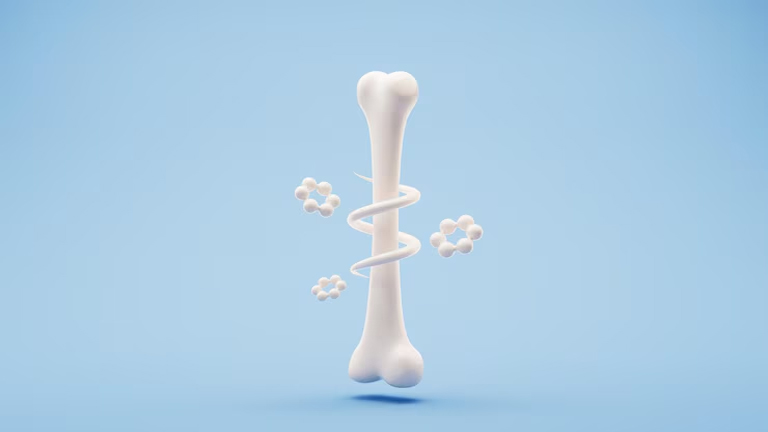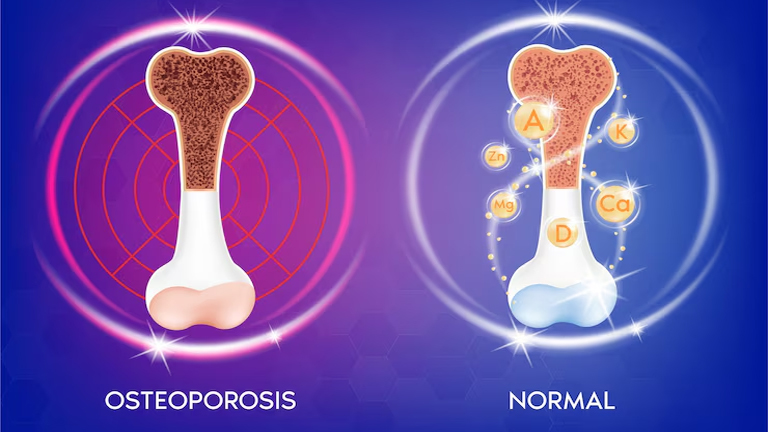Osteoporosis is often called the “silent disease” because it progresses without noticeable symptoms until a bone breaks. However, recognizing early warning signs can help prevent severe complications like fractures, chronic pain, and loss of mobility. This guide explores osteoporosis symptoms, risk factors, and when to seek medical attention.
Must Check: Insomnia Symptoms
What Are the Early Signs of Osteoporosis?
In its early stages, osteoporosis may not cause obvious symptoms. However, subtle changes may indicate weakening bones:
1. Gradual Loss of Height
-
Shrinking by more than an inch over time can signal vertebral compression fractures.
-
A stooped posture (dowager’s hump) develops due to spinal bone collapse.
2. Receding Gums
-
Jawbone deterioration (from low bone density) can cause gums to recede.
-
Dentists may detect early bone loss through dental X-rays.
3. Weakened Grip Strength
-
Studies link poor handgrip strength to lower bone density.
-
Difficulty opening jars or carrying heavy objects may indicate weakening bones.
4. Brittle Nails
-
Weak, easily broken nails may suggest nutritional deficiencies (calcium, vitamin D) affecting bone health.
Advanced Osteoporosis Symptoms
As bone loss worsens, symptoms become more apparent:
1. Sudden, Severe Back Pain
-
Spinal fractures cause sharp pain that worsens with movement.
-
Pain may improve when lying down but returns when standing.
2. Frequent Fractures from Minor Falls
-
Bones break easily—even from low-impact activities like coughing or bending.
-
Common fracture sites: hips, wrists, and spine.
3. Limited Mobility & Posture Changes
-
Kyphosis (a hunched back) develops due to multiple spinal fractures.
-
Reduced lung capacity from compressed ribs leads to shortness of breath.
Silent Progression: Why Osteoporosis Goes Undetected
-
No pain in early stages – Bone loss happens gradually.
-
First symptom is often a fracture – Many don’t realize they have osteoporosis until a break occurs.
-
Misdiagnosis – Back pain may be mistaken for arthritis or muscle strain.
Who Is Most at Risk for Osteoporosis Symptoms?
High-Risk Groups
✔ Postmenopausal women (estrogen drop accelerates bone loss).
✔ Adults over 50 (bone density declines with age).
✔ People with a family history of osteoporosis or fractures.
✔ Long-term steroid users (e.g., prednisone weakens bones).
✔ Those with low calcium/vitamin D levels.
Lifestyle Risk Factors
-
Sedentary behavior – Lack of exercise speeds bone loss.
-
Smoking & heavy alcohol use – Reduces bone formation.
-
Poor diet – Low calcium, excessive soda/coffee intake.
When to See a Doctor
Seek medical advice if you experience:
⚠ Unexplained back pain (possible spinal fracture).
⚠ Height loss of 1.5 inches or more.
⚠ A fracture from a minor injury.
⚠ Family history of osteoporosis.
Diagnostic Tests
-
DEXA Scan – Measures bone mineral density (BMD).
-
X-rays – Detect fractures or spinal deformities.
-
Blood Tests – Check calcium, vitamin D, and thyroid levels.
How to Prevent Worsening Symptoms
1. Nutrition for Strong Bones
-
Calcium-rich foods: Dairy, leafy greens, almonds.
-
Vitamin D sources: Sunlight, fatty fish, fortified milk.
2. Exercise to Strengthen Bones
-
Weight-bearing workouts: Walking, jogging, dancing.
-
Resistance training: Lifting weights improves bone density.
3. Fall Prevention Tips
-
Remove tripping hazards (rugs, clutter).
-
Install grab bars in bathrooms.
-
Wear supportive, non-slip shoes.
Complications of Ignoring Osteoporosis Symptoms
Untreated osteoporosis can lead to:
-
Chronic pain from multiple fractures.
-
Permanent disability (hip fractures often require surgery).
-
Reduced quality of life (loss of independence).
Difference Between Osteopenia and Osteoporosis Symptoms
| Osteopenia | Osteoporosis |
|---|---|
| Mild bone loss | Severe bone loss |
| Few/no symptoms | Frequent fractures |
| Reversible with lifestyle changes | Requires medication |
Latest Research on Osteoporosis Detection
-
AI bone scans predict fracture risk earlier.
-
Biomarker tests may soon detect osteoporosis via blood samples.
Conclusion: Don’t Wait for a Fracture
Since osteoporosis symptoms often appear too late, early screening is crucial—especially for high-risk individuals. If you notice height loss, back pain, or frequent fractures, consult a doctor for a bone density test.
Key Takeaways
✅ Watch for height loss, back pain, and fractures.
✅ Get a DEXA scan if you’re over 50 or at risk.
✅ Strengthen bones with diet, exercise, and supplements.
By recognizing symptoms early, you can prevent debilitating fractures and maintain an active, healthy life.


